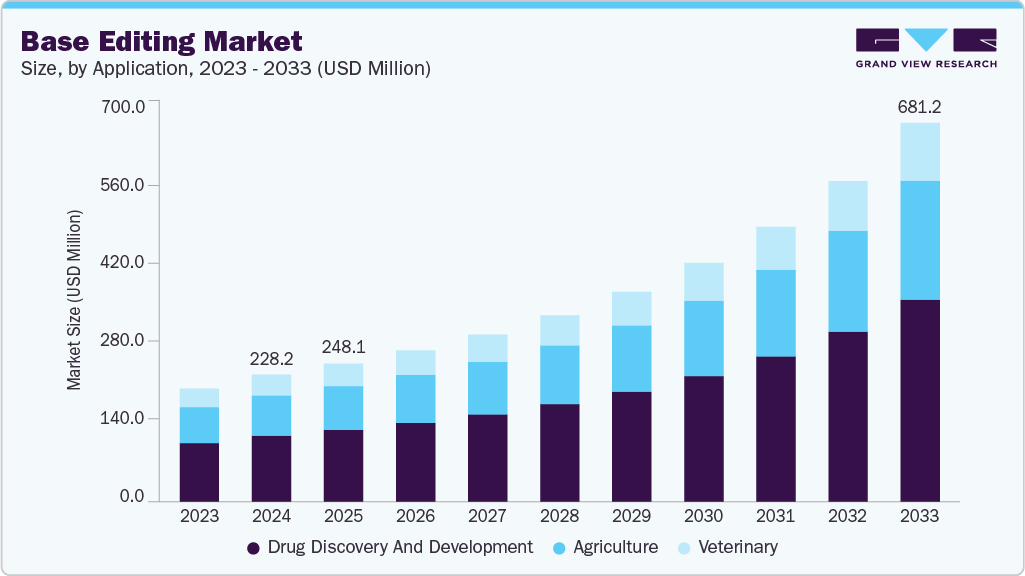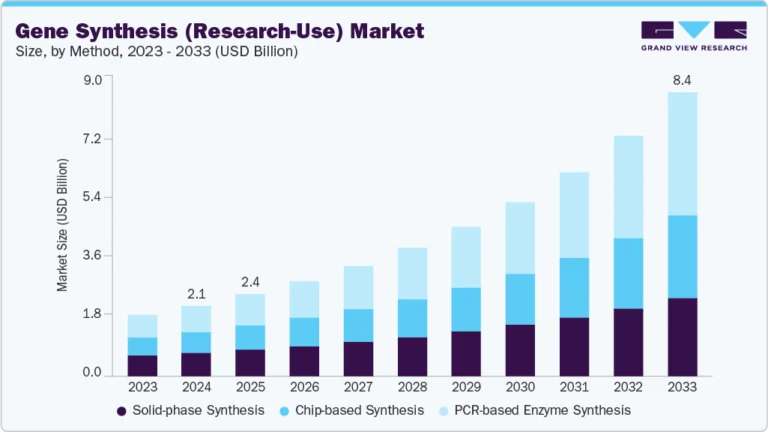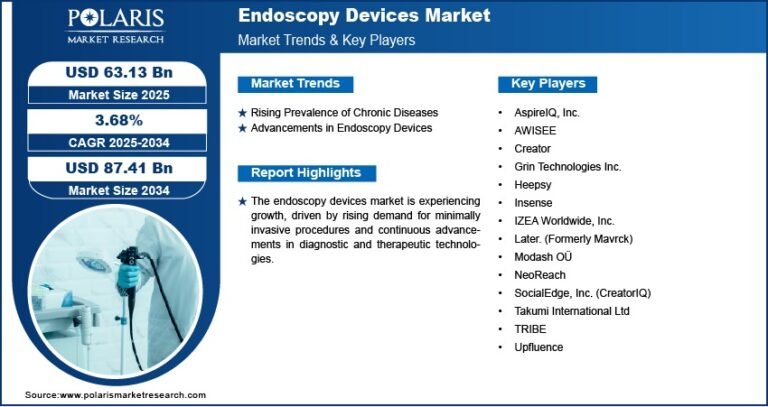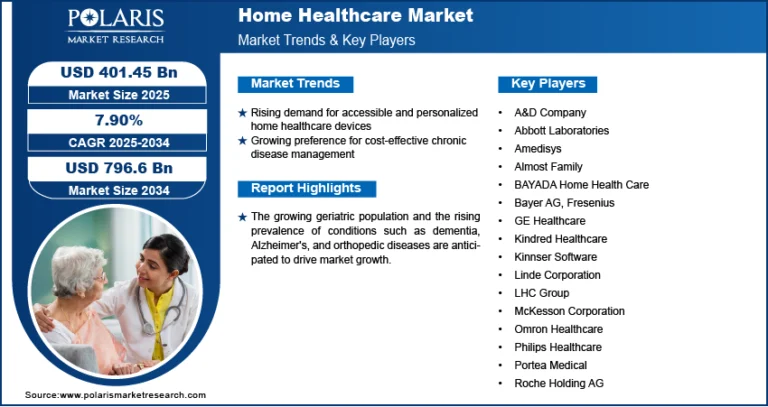Base Editing Market Size, Share & Trends Analysis Report And Segment Forecasts, 2025 – 2033

The global base editing market size was estimated at USD 228.2 million in 2024 and is projected to reach USD 681.2 million, growing at a CAGR of 13.46% from 2025 to 2033. Rising prevalence of chronic & rare diseases, increased application of genomic research in therapeutics, and increased government funding & growing focus on genomic studies are the factors driving the base editing industry.
Key Market Trends & Insights
- The North America base editing market held the largest share of 40.46% of the global market in 2024.
- The base editing industry in the U.S. is expected to grow significantly over the forecast period.
- By products & services, the product segment held the highest market share in 2024.
- Based on application, the drug discovery and development segment held the highest market share in 2024.
- By end use, the academic & research institutes segment held the highest market share in 2024.
Market Size & Forecast
- 2024 Market Size: USD 228.2 Million
- 2033 Projected Market Size: USD 681.2 Million
- CAGR (2025-2033): 13.46%
- North America: Largest market in 2024
- Asia Pacific: Fastest growing market
Request a free sample copy or view report summary: https://www.grandviewresearch.com/industry-analysis/base-editing-market-report/request/rs1
Advancement in Base Editing Technology
Base editing (BE), a CRISPR-Cas9 genome editing technology, offers potential therapeutic strategies against diseases. Base editing has shown significant potential in correcting genetic mutations associated with immunodeficiency disorders and chronic diseases such as cardiovascular disorders, metabolic conditions, and certain types of cancer. Moreover, base editing sensor libraries enable high-throughput screening and functional analysis of cancer-associated single nucleotide variants. The rising number of cancer cases worldwide increases the demand for novel therapeutics. For instance, in 2022, cancer was one of the leading causes of death globally, with 20 million new cases and 9.7 million deaths, according to the National Cancer Institute. By 2040, it is projected that cancer cases will reach 29.9 million, with 15.3 million cancer-related deaths.
Recent advancements in base editing technology have shown significant progress in crop genetic improvement. For instance, according to a study published in Genome Biology in February 2024, scientists have developed highly efficient base editors for cotton plants. The GhABE8e base editor exhibited 99.9% editing efficiency compared to GhABE7.10, which had 64.9% efficiency, with no off-target editing detected. Such studies provide an important technical platform and genetic information for studying and creating ideal plant architecture.





